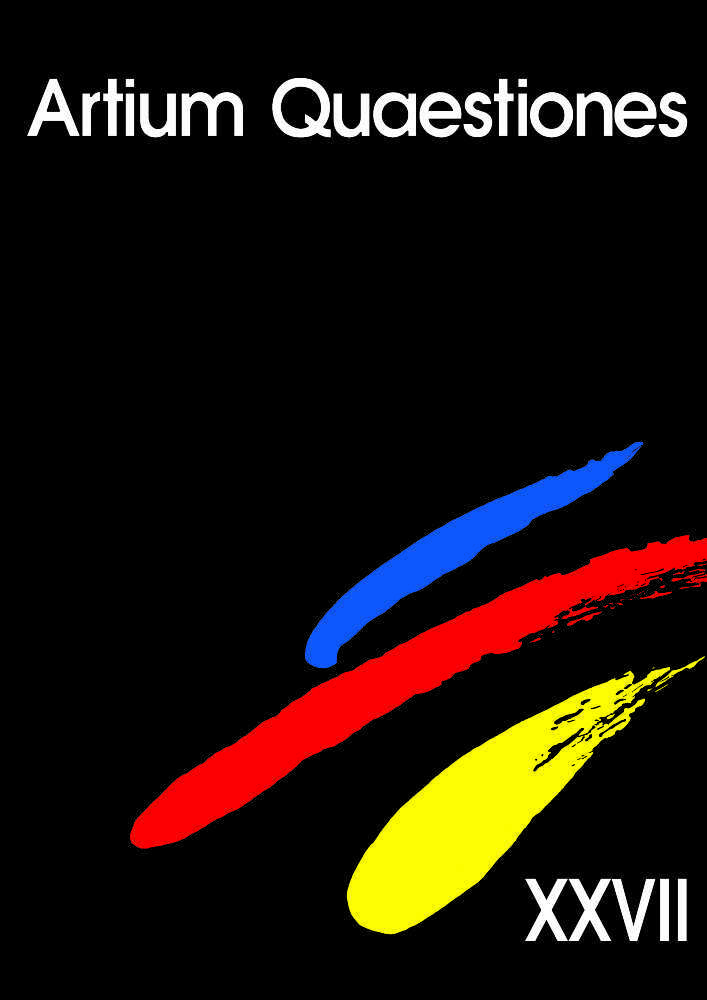Abstrakt
The painting of the matter was an important component of Polish art of the “thaw” period and the 1960s. So far Polish art historians have usually interpreted works made of non-traditional substances by Polish artists as examples of inspiration by Western art and a tendency to abandon the painting as such. Scholars and critics stressed the relief qualities of art objects and their impact on the spectator through the surface texture and the properties of the material used, often incorporated into a picture directly from reality and provoking specific associations. Such an approach did justice only to some such works, e.g., those painted with paints mixed with nonpainterly substances, with the mud effects of the palette, characteristic of French art (Aleksander Kobzdej, Jan Lebenstein), or abandoning traditional materials to challenge the painting as such (Jan Ziemski, Włodzimierz Borowski, Jerzy Rosołowicz). Thus far the reflection on the painting of the matter seems inadequate to the works in which paint was eliminated in favor of other materials and substances combined with painterly activities. Those unspecific substances and materials were often distributed on flat surfaces and composed in terms of basic division of the pictorial field, its main axes, relations to the edges, etc. Such “paintings made of matter” are interesting examples of the “thaw” art, which have not been interpreted as paintings, escaping chronological and other criteria of art history. Ambiguously called the “painting of the matter,” they occupied the margins of the critical discourse. The inadequacy of the terms adopted to describe them resulted in ignoring many works, while others have been included in the history of Polish art only in some aspects. So far no one has addressed the basic question of different artistic responses to the problem of searching for the limits of the painting, and related attempts to enhance the painterly idiom which was at the same time disrupted in a number of ways. The author analyzes works selected from the set of about three hundred items found in thirteen Polish museums. Regardless of the individual differences, the paintings by Jadwiga Maziarska, Bronisław Kierzkowski, Adam Marczyński, Teresa Rudowicz, and Krystyn Zieliński exemplify the combination of non-traditional substances and surface composition. Paradoxically, the decision to abandon paint did not make those artists deny the superior role of the surface, which resulted in the creation of works oscillating among painting, relief, and sculpture, close to collages or assemblages, yet quite specific. Their works either exploited the conditions offered by the framed flat surface or brought into play new, autonomous surfaces.
Licencja
Prawo autorskie regulowane jest oświadczeniem autora przygotowanym przez Wydawnictwo Naukowe UAM a od nr XXVIII także umową licencyjną na publikację online zawartą pomiędzy Autorem i Uniwersytetem im. Adama Mickiewicza. Autorzy ponoszą odpowiedzialność za oryginalność zamieszczanego materiału tekstowego oraz regulację praw autorskich dotyczących materiałów ilustracyjnych. W przypadku, gdy materiały pochodzą od redakcji – odpowiedzialność ponosi redakcja czasopisma.
Ten utwór dostepny jest na licencji Creative Commons Uznanie autorstwa - Użycie niekomercyjne - Bez utworów zależnych 4.0 Międzynarodowe.
